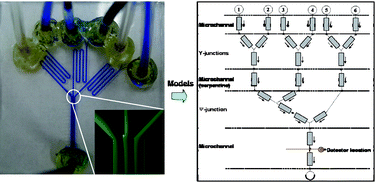Generation of complex concentration profiles by partial diffusive mixing in multi-stream laminar flow
Abstract
This paper proposes novel microfluidic concentration gradient generator (CGG) devices that are capable of constructing complex profiles of chemical concentrations by laterally combining the constituent profiles (e.g., linear and bell-shaped) generated in simple Y- or ψ-shaped mixers. While the majority of currently existing CGG devices are based on complete


 Please wait while we load your content...
Please wait while we load your content...